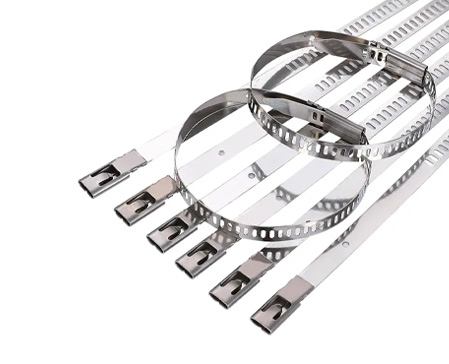
-
 Afrikaans
Afrikaans -
 Albanian
Albanian -
 Amharic
Amharic -
 Arabic
Arabic -
 Armenian
Armenian -
 Azerbaijani
Azerbaijani -
 Basque
Basque -
 Belarusian
Belarusian -
 Bengali
Bengali -
 Bosnian
Bosnian -
 Bulgarian
Bulgarian -
 Catalan
Catalan -
 Cebuano
Cebuano -
 Corsican
Corsican -
 Croatian
Croatian -
 Czech
Czech -
 Danish
Danish -
 Dutch
Dutch -
 English
English -
 Esperanto
Esperanto -
 Estonian
Estonian -
 Finnish
Finnish -
 French
French -
 Frisian
Frisian -
 Galician
Galician -
 Georgian
Georgian -
 German
German -
 Greek
Greek -
 Gujarati
Gujarati -
 Haitian Creole
Haitian Creole -
 hausa
hausa -
 hawaiian
hawaiian -
 Hebrew
Hebrew -
 Hindi
Hindi -
 Miao
Miao -
 Hungarian
Hungarian -
 Icelandic
Icelandic -
 igbo
igbo -
 Indonesian
Indonesian -
 irish
irish -
 Italian
Italian -
 Japanese
Japanese -
 Javanese
Javanese -
 Kannada
Kannada -
 kazakh
kazakh -
 Khmer
Khmer -
 Rwandese
Rwandese -
 Korean
Korean -
 Kurdish
Kurdish -
 Kyrgyz
Kyrgyz -
 Lao
Lao -
 Latin
Latin -
 Latvian
Latvian -
 Lithuanian
Lithuanian -
 Luxembourgish
Luxembourgish -
 Macedonian
Macedonian -
 Malgashi
Malgashi -
 Malay
Malay -
 Malayalam
Malayalam -
 Maltese
Maltese -
 Maori
Maori -
 Marathi
Marathi -
 Mongolian
Mongolian -
 Myanmar
Myanmar -
 Nepali
Nepali -
 Norwegian
Norwegian -
 Norwegian
Norwegian -
 Occitan
Occitan -
 Pashto
Pashto -
 Persian
Persian -
 Polish
Polish -
 Portuguese
Portuguese -
 Punjabi
Punjabi -
 Romanian
Romanian -
 Russian
Russian -
 Samoan
Samoan -
 Scottish Gaelic
Scottish Gaelic -
 Serbian
Serbian -
 Sesotho
Sesotho -
 Shona
Shona -
 Sindhi
Sindhi -
 Sinhala
Sinhala -
 Slovak
Slovak -
 Slovenian
Slovenian -
 Somali
Somali -
 Spanish
Spanish -
 Sundanese
Sundanese -
 Swahili
Swahili -
 Swedish
Swedish -
 Tagalog
Tagalog -
 Tajik
Tajik -
 Tamil
Tamil -
 Tatar
Tatar -
 Telugu
Telugu -
 Thai
Thai -
 Turkish
Turkish -
 Turkmen
Turkmen -
 Ukrainian
Ukrainian -
 Urdu
Urdu -
 Uighur
Uighur -
 Uzbek
Uzbek -
 Vietnamese
Vietnamese -
 Welsh
Welsh -
 Bantu
Bantu -
 Yiddish
Yiddish -
 Yoruba
Yoruba -
 Zulu
Zulu


Desemba . 20, 2024 06:28 Back to list
silverline fish tape
Understanding Silverline Fish Tape A Comprehensive Guide
When it comes to wiring and electrical work, a reliable toolset is essential for professionals and DIY enthusiasts alike. Among the myriad of tools available for cable installation, the fish tape stands out as an indispensable device. In particular, Silverline fish tape has become a popular choice for many due to its quality and effectiveness. In this article, we will explore what fish tape is, the benefits of using Silverline fish tape, and some best practices for its use.
What is Fish Tape?
Fish tape is a long, flexible tool used by electricians to route new wiring through walls, ceilings, and conduits. Made from materials such as steel or fiberglass, fish tape can be pushed and pulled through tight spaces, making it easier to pull electrical wire from one point to another. The tool is typically coiled into a reel for easy storage and deployment, and its design allows it to navigate bends and corners in the installation environment.
Benefits of Silverline Fish Tape
1. Durability One of the standout features of Silverline fish tape is its durability. Made from high-quality materials, it can withstand the rigors of tough job sites. Whether you're working in a residential setting or a commercial project, the Silverline fish tape is built to last, reducing the need for frequent replacements.
2. Flexibility Silverline fish tape offers great flexibility without compromising strength. This means it can easily maneuver through small spaces and sharp angles, making it easier for electricians to route wires in difficult-to-reach locations.
3. Ease of Use Designed with the user in mind, Silverline fish tape typically features a comfortable grip handle, making it easier to work with for extended periods. The smooth action of extending and retracting the tape helps to minimize the risk of damage to walls and insulation during the wiring process.
4. Visibility Many Silverline models have a bright, easy-to-see color, which can be particularly useful in dimly lit areas. This visibility reduces the chances of misplacement and helps you track its position during use.
silverline fish tape

5. Versatile Applications Silverline fish tape is not limited to electrical work; it can also be used for various applications such as telecommunications, cable TV installations, and other scenarios where wire pulling is necessary.
Best Practices for Using Silverline Fish Tape
1. Assess the Environment Before starting your wiring project, take the time to understand the layout of walls or ceilings. Identifying potential obstacles will save time and prevent frustration.
2. Use Proper Technique When feeding fish tape into a conduit or wall cavity, ensure you apply consistent pressure without forcing it. This approach will help avoid damaging both the tape and the surrounding structures.
3. Attach a Wire Properly As you prepare to pull the wire through, securely attach it to the end of the fish tape. This can typically be done using electrical tape or another appropriate fastening method. An improper connection can lead to snags and delays.
4. Maintain Your Fish Tape After each use, clean the fish tape and inspect it for any signs of wear or damage. Proper maintenance will prolong its lifespan and ensure reliability for future projects.
Conclusion
In conclusion, Silverline fish tape is an essential tool for anyone involved in electrical wiring or general cable installation. Its durability, flexibility, and ease of use make it a top choice among professionals. By following best practices, users can enhance their productivity and efficiency when working with this valuable tool. Whether you’re a seasoned electrician or a newcomer to the world of wiring, Silverline fish tape is a reliable companion that can help you tackle your projects with confidence.
Latest news
The Unique Design of Cable Socks
NewsJun.04,2025
Swivel Connectors in Industrial Automation
NewsJun.04,2025
Safety Features of Link Sticks
NewsJun.04,2025
How to choose the best cable pulling winch for sale
NewsJun.04,2025
Fish tape safety precautions
NewsJun.04,2025
Essential Maintenance Tips for Cable Pulling Tools
NewsJun.04,2025











